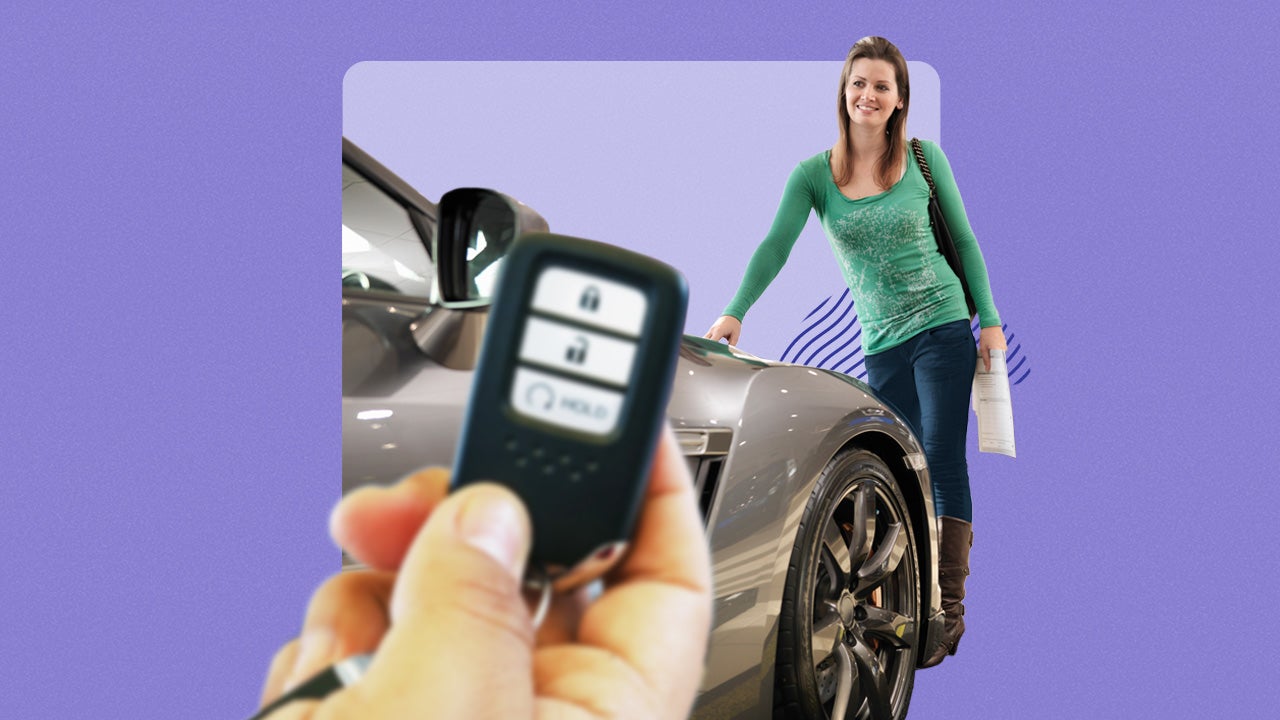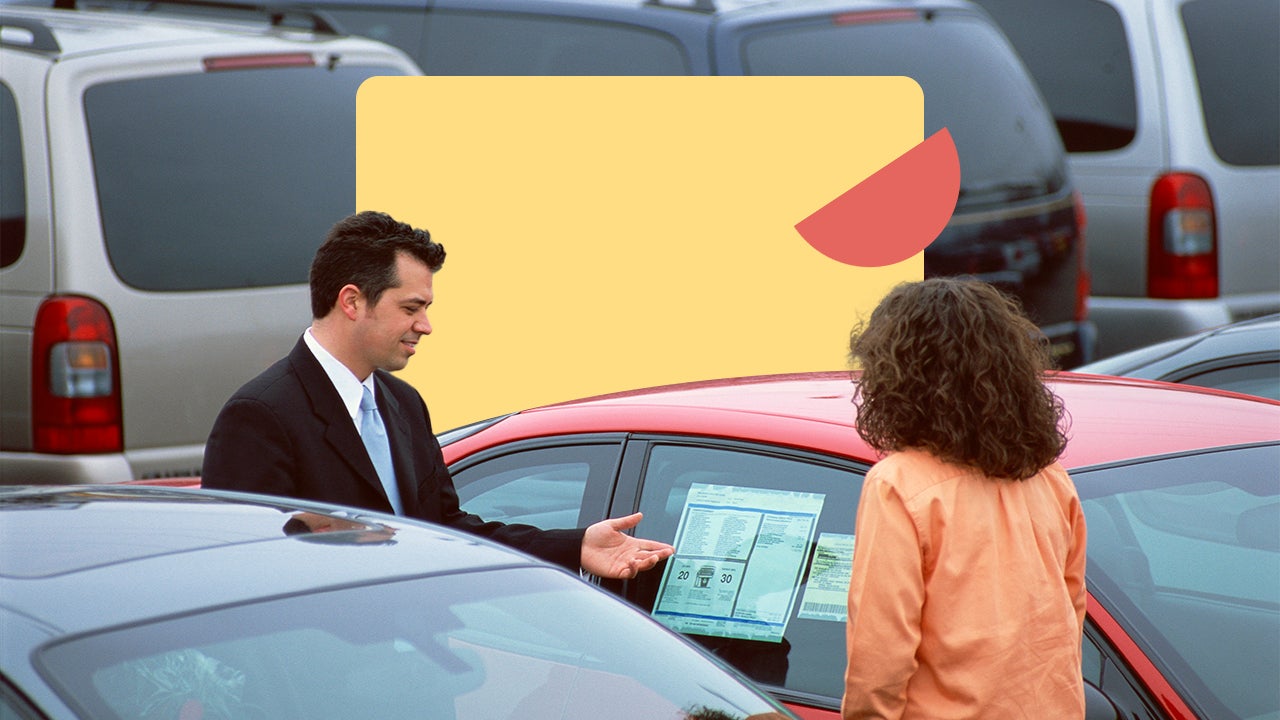How to buy a car online in 8 steps

Key takeaways
- Buying a car online offers easy access to valuable information that can help ensure you get the best deal.
- After you set a car budget, it’s smart to secure auto loan preapproval before you start your search.
- Online resources can help you determine what car you want to purchase. However, be sure to test drive your potential car before purchasing it.
Buying a car online offers convenience and accessibility that buying at a dealership does not. You have easy access to an immense amount of information, like financing and trade-in values, the manufacturer’s suggested retail price and more, to help with the online buying process. Learning the steps to buying a car online will help you be a more informed shopper and get the best deal.
How to purchase a car online
There isn’t much difference between buying a car online or at a dealership. Before heading to the web to find the perfect ride, assess your finances to confirm you’re in a position to qualify for the best deal. That way, you’ll be prepared to shop for financing, negotiate with confidence and seal the deal without hiccups along the way.
1. Set your budget
Your first step should be determining how much you can afford to spend, including fuel, car insurance and your down payment. These all contribute to the purchase price and ongoing monthly cost associated with owning a car.
Your budget calculations should also consider the interest you will pay since it is the biggest influence on your monthly payment and the overall cost. Buyers with higher credit scores will be offered more competitive interest rates than buyers with lower credit scores.
The general rule of thumb is to make a down payment of at least 20 percent and to spend no more than 15 percent of your monthly household budget on all vehicle expenses, including maintenance and insurance.
2. Get preapproved for a loan
To get the best deal on a car loan, research your options and get preapproved by a lender before car shopping. This gives you a good idea of your interest rate, which plays a significant role in how much your monthly payment will be and the total cost over the life of the loan. Banks, credit unions and online lenders offer preapproval periods that allow you to see your potential interest rate and monthly payment so you can shop smartly.
And when you have preapproval, you can use it as leverage when negotiating a deal. Dealer financing often involves big markups, so getting a loan online first will help you get the best deal.
“When you’ve agreed on a price, show the dealer your financing and ask if they can beat that rate,” says Matt DeLorenzo, former senior managing editor for Kelley Blue Book. “Sometimes dealers have little-known incentives attached to manufacturer-sponsored financing, which could save you money.”
3. Know the value of your trade
To put yourself in a good position, get trade-in quotes from multiple dealerships and use them as negotiation leverage. Trusted resources like Kelley Blue Book or Edmunds can be used to estimate the value of your car, and websites like CarGurus use algorithms to determine a car’s expected trade-in value based on characteristics such as its age, mileage, location and features.
After you estimate the value of your trade-in, there are a few common ways to sell your used car online or in person:
- Trade in your used vehicle at a dealership, even if you choose to buy your next car somewhere else.
- Sell it yourself privately by listing your vehicle on private-party sale sites such as eBay and Craigslist.
- Sell to a used car dealer such as CarMax or Carvana. Ask for its guaranteed cash price and compare it with what you’ve found online.
Once you receive quotes for your trade, compare them and choose if you’ll accept a dealer’s trade-in offer, sell privately or accept an offer from a used car dealer.
4. Find the right car
Most people already use the internet to determine what type of car they want and find out as much as possible about the make, model and options. Websites offer expert reviews and articles on hundreds of vehicles, detailing the best vehicles for multiple lifestyles, says CarGurus Deputy Editor Matt Smith.
“And with YouTube, shoppers no longer need to walk the vehicle lot in order to get a good look at cars that interest them,” Smith says. You can do most of your shopping online to reduce time on the car lot. And in some cases, dealers offer entirely online buying processes, although you may not be able to negotiate the price.
Make a list of cars you’re interested in buying and do your research online. Use the information you find to create questions for the dealer, whether you’re purchasing online or in person. This will help you narrow down your choice and determine which car is right for you.
5. Check local inventory
When there is a limited supply of the car you want on dealer lots, there is less of a chance you’ll get a great deal, so be sure to check what local dealerships have in stock. Call a variety of dealers to inquire about the availability of the car you have in mind.
Beyond dealerships that may allow you to submit an online application, look for private sales. You may have better luck skipping the dealer entirely and shopping at sites that help buyers and sellers connect, including:
- eBay Motors.
- Facebook Marketplace.
- Craigslist.
You may also want to consider shopping with dealers that offer in-person and online shopping experiences, like TrueCar.
It can still be a good idea to go see a vehicle in person before signing a sales contract. You can call the dealership and ask a salesperson to take pictures of the vehicle for you, but you should always go for a test drive and mechanic inspection before buying.
When shopping online, look for vehicles with both the VIN (vehicle identification number) in the listing and pictures of the actual vehicle being sold rather than stock photos.
6. Contact local dealerships for price quotes
Once your online research is complete, contact dealerships for online price quotes. Many dealerships now have departments dedicated to online sales, and whether you email the online sales department or fill out a contact form on the dealer’s website, you should reach someone who has the authority to quote you a price.
Be as specific as possible with make, model and options, and ask several dealerships for their best offers. Compare them with your researched price ranges and one another to determine which is best. With more quotes in hand, you will have more leverage when it comes to negotiating. However, remember that most dealerships will be hesitant to offer the best price unless they are sure you will be making a purchase.
7. Negotiate online
If none of the initial price quotes you receive fall within your range between the fair market value and the invoice price, you can use those two numbers to ask dealers for their best prices. You should also ask about rebates and financing incentives. On average, new-car incentives accounted for 8 percent of the purchase price at the end 2024, according to KBB. If you have a preapproval from your lender, you can mention it — it’s like being a cash buyer. See if the dealer can offer you a better rate.
“It’s best to ask first what’s the dealer’s best offer. You don’t have to share any details of other offers or negotiations that you’re in with another dealer unless it’s to your advantage,” DeLorenzo says. “Use those figures to ask if the dealer can beat the other deals. If not, remember you are in control and can take your business elsewhere.”
Be sure any price quotes are itemized in an email, and remember to ask if any extra fees are withheld or included. Items such as “customer service fees,” options and add-ons — which are negotiable and can be removed — can tack thousands onto your overall price.
If one dealer gives you a price you like, you can email the quote to another dealer to get competing bids, especially if you know exactly what each price quote includes.
If you qualify for 0% financing, evaluate any other rebates or incentives before accepting the deal. Although it may seem like a better offer on the surface, you may pay less in interest with a third-party lender that charges fewer fees.
8. Sign and drive
By now, you should be working with a dealership that has the car you want and has offered you the best deal, but you may still have to visit the dealership to finalize the sale, sign any required financing paperwork and pick up your keys and vehicle. That said, many dealerships are also now delivering cars and paperwork right to your driveway, allowing this final step to be completed at your home.
No matter which approach you take, look over the final contract carefully. Check all of the numbers and ask for explanations of any additional charges or fees that look questionable. Schedule an appointment with a mechanic to check the car over — even if it’s new — and don’t finalize any paperwork until you are sure your financing and vehicle are what you want.
Who should buy a car online?
There are several perks associated with buying a car online, which makes it a popular choice for many consumers. You have the luxury of comparing several vehicles in one sitting, and you can use the online chat feature to connect with a sales representative to ask any questions you have.
Consider going this route if:
- You’re comfortable with the no-haggle policy that accompanies most online car deals.
- You prefer to avoid high-pressure sales tactics that may come with visiting a dealership.
- You’re pressed for time and need a more convenient, time-conscious way to buy a car.
- You’re undecided and want a bit more time to find the right vehicle for you.
- You want the option to shop anytime, day or night.
The finance and insurance managers may try to sell you add-ons, but be resolute in saying no. Only add something to your car loan if there is no better way to get the service or option.
Who shouldn’t buy a car online?
The online car-buying experience likely isn’t a good fit if you prefer to work with a salesperson face-to-face. More specifically, if you want to handle the negotiations in person, you’re better off starting your search online and heading to the dealership to seal the deal once you find the perfect vehicle. The same applies if you want to scope out and test drive several cars before making a purchasing decision.
Bottom line
Buying a car online — or doing most of the legwork online before visiting a dealer — can save you time and money. Check up on current rates, view local and national inventory, compare current vehicle prices and prepare yourself for negotiation. Using the abundance of information available on the internet to your advantage can eliminate much of the stress that comes with getting a new car.






